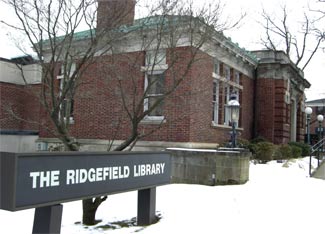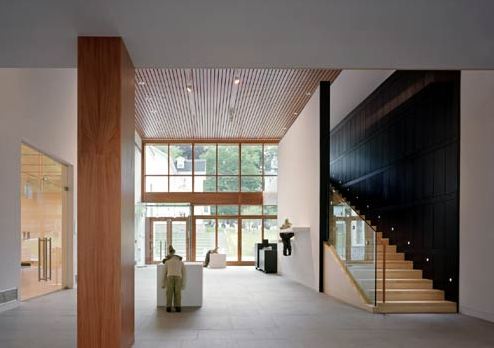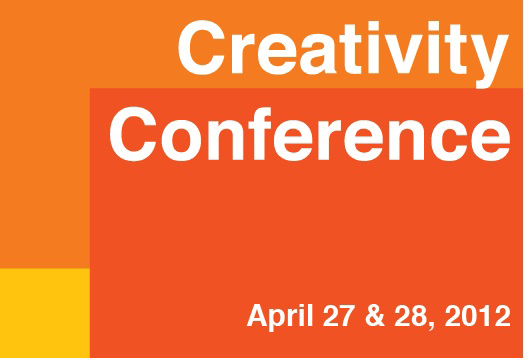|
|
||
|
Pro Tools
FILMFESTIVALS | 24/7 world wide coverageWelcome ! Enjoy the best of both worlds: Film & Festival News, exploring the best of the film festivals community. Launched in 1995, relentlessly connecting films to festivals, documenting and promoting festivals worldwide. Working on an upgrade soon. For collaboration, editorial contributions, or publicity, please send us an email here. User login |
Finding Slovenian Cinema On The International Film Map
Friday, July 11-----What most American do not know about the country of Slovenia could easily fill the mileage that separates the two countries. Well, with the idea that film can be an informative and illuminating guide to other cultures, New York's Film Society of Lincoln Center and the Slovenian Film Fund will be presenting a program of classic and contemporary Slovenian films from July 16 to 22. So ladies and gents, it’s time to brush up on your Slovene savvy. Let’s start with some basics: Slovenia, officially the Republic of Slovenia is a country in southern Central Europe bordering Italy to the west, the Adriatic Sea to the southwest, Croatia to the south and east, Hungary to the northeast, and Austria to the north. The capital of Slovenia is Ljubljana. At various points in Slovenia's history, the country has been part of the Roman Empire, the Byzantine Empire, the Republic of Venice, the Holy Roman Empire, the Habsburg Monarchy and the Austro-Hungarian Empire. It became part of the Kingdom of Yugoslavia following World War I and the Socialist Republic of Slovenia after 1945, before gaining full independence in 1991. Slovenia is the only former communist state to be at the same time a member of the European Union, the Eurozone, the Council of Europe and NATO. Through its long and often troubled history, the Slovene people have retained their own distinct cultural identity. In terms of film, Slovene cinema has a more than century-long tradition with such notable historical film auteurs as Karol Grossmann, Janko Ravnik, Ferdo Delak, France Štiglic, Mirko Grobler, Igor Pretnar, France Kosmač, Jože Pogačnik, Matjaž Klopčič, Jane Kavčič, Jože Gale, Boštjan Hladnik and Karpo Godina. In the past decade and a half, since becoming its one sovereign nation, there has been a generation of film artists who have been referred to as the “renaissance of Slovenian cinema”, including such contemporary film directors Janez Burger, Jan Cvitkovič, Damjan Kozole, Janez Lapajne and Maja Weiss. In all, there have been over 150 Slovene feature films, plus a few hundred documentaries and short films, currently producing between four and six feature films each year.
Bringing the Slovene sensibility to New York film audiences, At the Crossroads: Slovenian Cinema will showcase more than a dozen classic and contemporary films that chart Slovenian cinema’s continued evolution as a distinct member of the world cinema club. Screenings will be held at the Walter Reade Theater, the flagship for the Film Society of Lincoln Center, with director Marko Nabersnik and author/film scholar Joseph Valencic on hand to introduce screenings throughout the series.
For more information on the films in the series, log on to the Film Society’s website: www.filmlinc.com. Once you have experienced the rare screenings of these films from a culture so far and yet so close, you will be able to find Slovenia on the international film map…… Sandy Mandelberger, Film New York Editor
11.07.2008 | FilmNewYork's blog Cat. : Andrej Kosak Austria Boštjan Hladnik Bostjan Hladnik Cinema of Yugoslavia Croatia Culture of Slovenia Damjan Kozole Damjan Kozole Entertainment Entertainment Europe Europe European Union Ferdo Delak Film Film New York Film Society of Lincoln Center Film Society of Lincoln Center Film Society of Lincoln Center France Frantisek Cap Hungary Igor Pretnar Jan Cvitkovič Jane Kavčič Janez Burger Janez Burger Janez Lapajne Janko Ravnik John Kitzmiller Joseph Valencic Jože Gale Jože Pogačnik Jože Pogačnik Karol Grossmann Karpo Godina Karpo Godina Lincoln Ljubljana Maja Weiss Marko Nabersnik Matjaž Klopčič Mirko Grobler New Directors/New Films New Films New York North Atlantic Treaty Organization Roman Empire Sandy Mandelberger Sašo Podgoršek Slovenia Slovenia Slovenian Cinema Slovenian Film Fund Slovenian Film Fund Social Issues Social Issues Technology Technology the 1957 Cannes Film Festival the Best Actor Prize the Cannes Film Festival the Film Society of Lincoln Center Valley of Peace Venice FILM
|
LinksThe Bulletin Board > The Bulletin Board Blog Following News Interview with EFM (Berlin) Director
Interview with IFTA Chairman (AFM)
Interview with Cannes Marche du Film Director
Filmfestivals.com dailies live coverage from > Live from India
Useful links for the indies: > Big files transfer
+ SUBSCRIBE to the weekly Newsletter Deals+ Special offers and discounts from filmfestivals.com Selected fun offers
> Bonus Casino
User imagesAbout FilmNewYork Mandelberger Sandy Mandelberger Sandy (International Media Resources) The Ultimate Guide to the New York Film, Video and New Media Scene. View my profile Send me a message The EditorUser contributions |
































